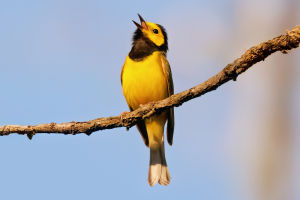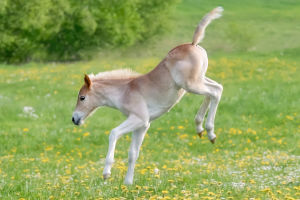Ladybugs, or ladybirds, are small, brightly colored insects from the Coccinellidae family, known for their vibrant red or orange bodies with black spots.
However, not all ladybugs are the same, as their colors and patterns can vary significantly. Despite their cute appearance, ladybugs are incredibly beneficial creatures, playing a vital role in ecosystems by controlling pests and promoting plant health.
The Different Types of Ladybugs
There are over 5,000 species of ladybugs, with more than 450 species found in North America alone. The most common species that we come across in our gardens is the Seven-spotted ladybug (Coccinella septempunctata). This species is often identified by its red body adorned with seven black spots.
Another well-known species is the Asian ladybug (Harmonia axyridis), which can vary in color from red to yellow with varying numbers of spots. While ladybugs are often characterized by their round, domed bodies and short legs, they come in a range of sizes and hues. Some species even have black or yellow bodies with distinct patterns of spots and stripes.
The Life Cycle of Ladybugs
The life cycle of a ladybug is fascinating and includes four stages: egg, larva, pupa, and adult. The adult ladybug lays its eggs near colonies of aphids or other pests, as these are the primary food sources for the larvae.
Upon hatching, the larvae look quite different from the adults—they have a long, segmented body with spiny projections and are often black or dark in color. As they grow, the larvae go through several molts and eventually enter the pupal stage, where they begin to transform into adult ladybugs.
The entire process from egg to adult can take just a few weeks, depending on environmental conditions such as temperature and availability of food. The adult ladybug emerges with soft, yellowish wings that gradually harden and develop their characteristic colors and patterns.
Ladybugs and Their Role in Pest Control
One of the most notable contributions of ladybugs to our environment is their role in controlling pests. Many species of ladybugs are natural predators of aphids, small insects that can damage plants by feeding on their sap.
A single ladybug can consume up to 5,000 aphids in its lifetime! This makes them incredibly valuable in agriculture and gardening, where they help reduce the need for chemical pesticides. Ladybugs are often used in organic farming practices as a form of biological pest control.
In addition to aphids, ladybugs also feed on other pests such as mealybugs, scale insects, and whiteflies. Their appetite for these harmful insects makes them a natural ally in the fight against crop damage, especially for farmers looking for eco-friendly solutions.
The Benefits of Ladybugs in Your Garden
Having ladybugs in your garden is more than just a delightful sight—they're excellent for keeping harmful pests at bay. Ladybugs are particularly effective at controlling aphids, which are notorious for destroying plants. By encouraging ladybugs to make a home in your garden, you can reduce the need for chemical treatments, promote biodiversity, and keep your plants healthy.
To attract ladybugs, consider planting a variety of flowering plants that provide nectar, as well as plants that attract aphids, which will naturally draw ladybugs to your garden. You can also provide a safe place for ladybugs to overwinter, such as leaves or a small pile of wood.
Fun Facts About Ladybugs
Ladybugs are fascinating creatures with a few fun and quirky characteristics:
1. Protective Coloration: The bright colors of ladybugs serve as a warning to predators. The vivid hues indicate that they are not a good meal due to the chemicals in their bodies that make them taste bad.
2. "Playing Dead" Defense: If a ladybug feels threatened, it can "play dead" by curling up and secreting a yellow, foul-smelling fluid from its joints to deter predators.
3. Symbol of Good Luck: In many cultures, ladybugs are considered symbols of good luck and fortune. Their appearance in gardens is often seen as a positive omen.
Why We Should Appreciate Ladybugs
In conclusion, ladybugs are not only beautiful but also incredibly helpful to our ecosystems. Their role as natural pest controllers makes them invaluable allies in both agriculture and home gardening. With their ability to reduce the need for harmful pesticides, ladybugs contribute to healthier, more sustainable environments.
Next time you spot a ladybug in your garden, remember that it's more than just a cute insect—it's an essential part of maintaining the balance in nature.
So, let's do our part to protect these wonderful creatures! Provide them with the right environment, and they will continue to be our tiny, but mighty, helpers in the fight against pests. Have you spotted any ladybugs lately? Let us know in the comments!
Ladybug facts: aka ladybeetle facts | Animal Fact Files
Video by Animal Fact Files


